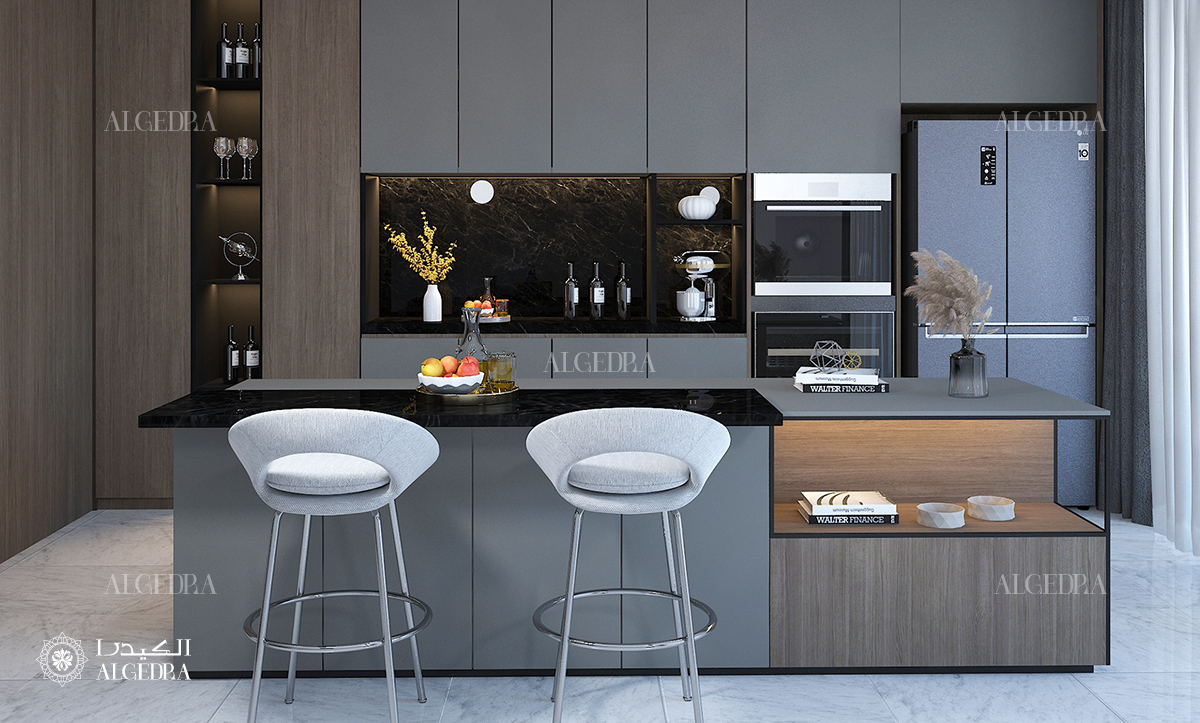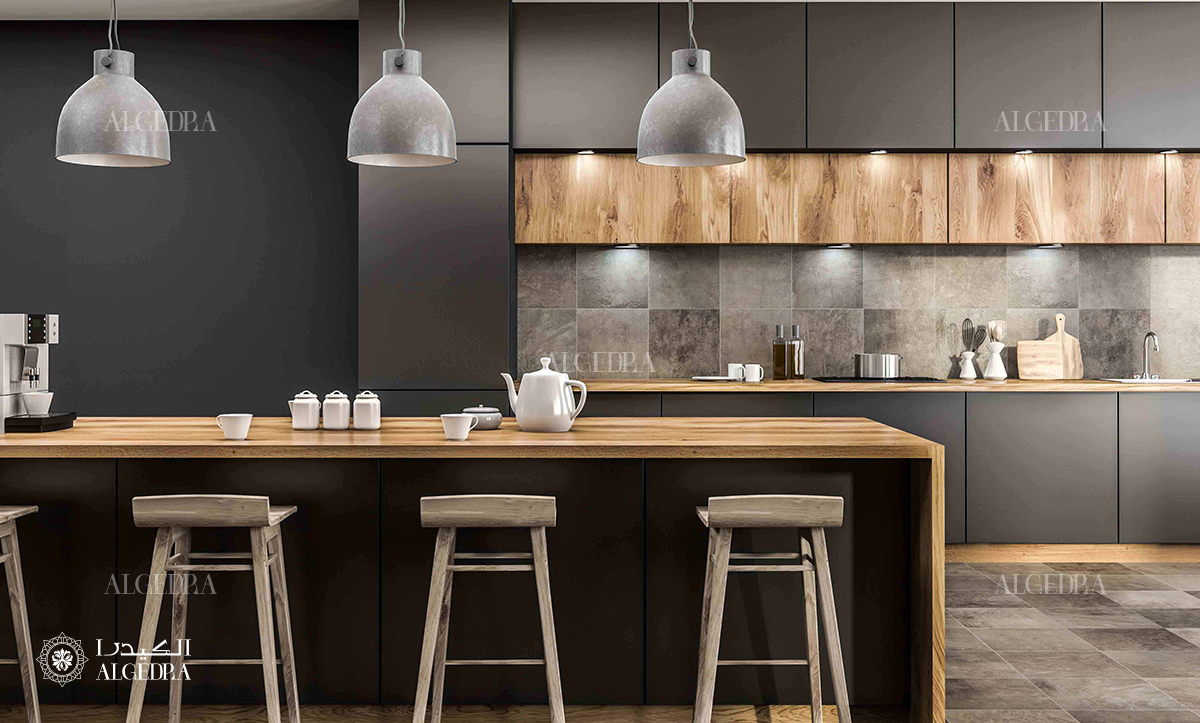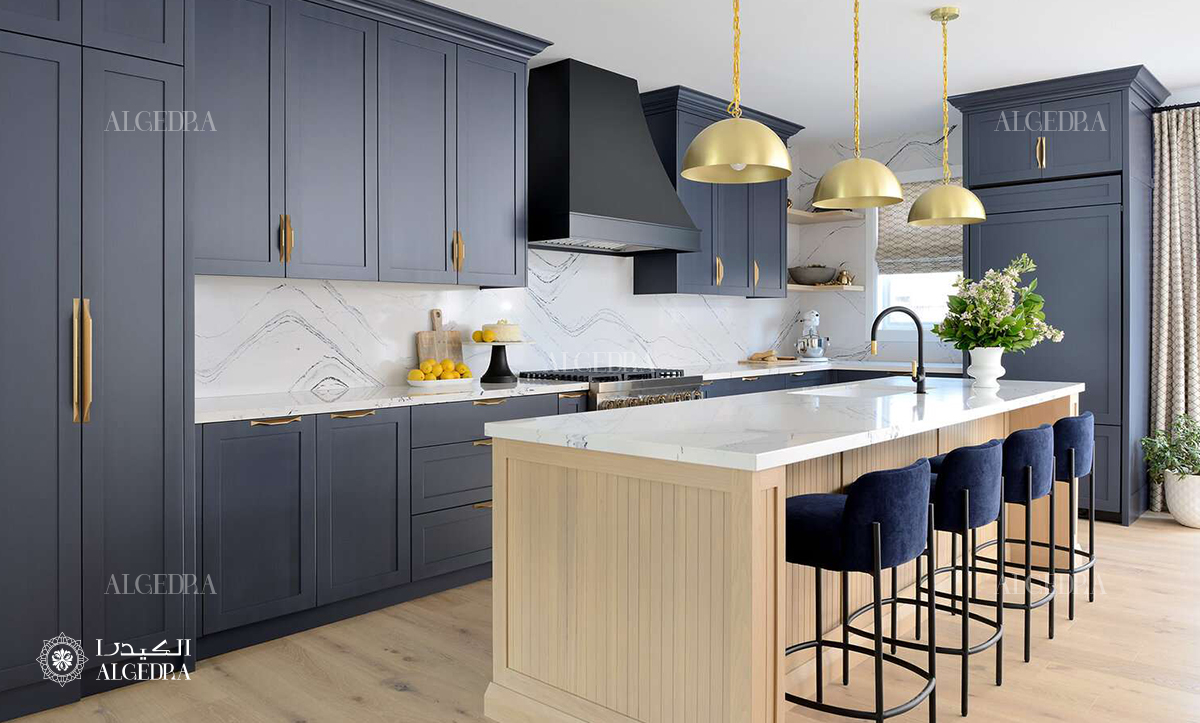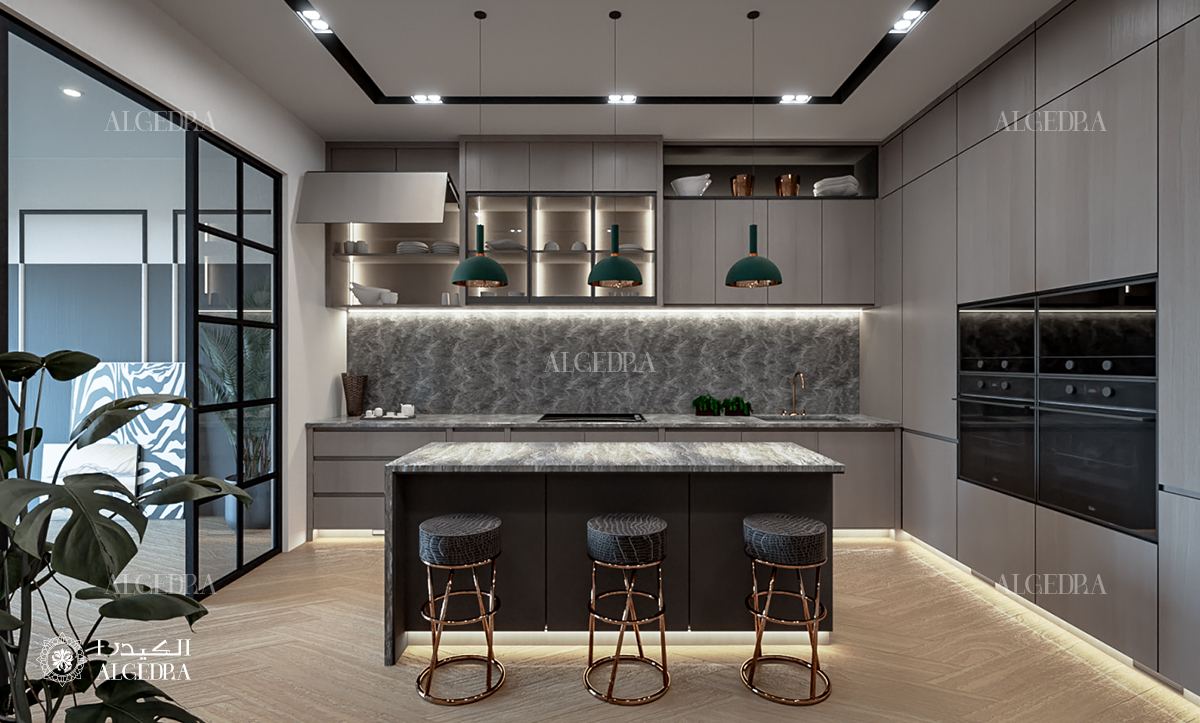Designing a kitchen is a meticulous process that requires careful consideration of both functionality and aesthetics. As the heart of the home, the kitchen deserves thoughtful planning to optimize efficiency, maximize storage, and create a visually appealing space.
In this blog, we will explore key principles and professional tips for designing a kitchen that meets your culinary needs while reflecting your personal style.
From assessing your needs and formulating a functional layout to maximizing storage solutions and incorporating stylish elements, we, Algedra designers, will guide you through the process of creating a kitchen that seamlessly blends practicality and style.
Assessing Your Needs - Formulating a Functional Layout
Before starting on your kitchen design journey, it is essential to assess your specific needs and requirements. Consider factors such as your cooking habits, the number of people using the kitchen, and any unique preferences or appliances you may have. This assessment will guide the layout of your kitchen and help determine the placement of key elements such as the sink, stove, and refrigerator.

Start by analyzing the space available in your kitchen. Consider the size and shape of the room and evaluate potential areas for improvement or expansion. Think about how you move around the kitchen and what areas require more attention during food preparation. This assessment will help you formulate a functional layout that enhances workflow efficiency.
The Kitchen Work Triangle - Enhancing Workflow Efficiency
The concept of the kitchen work triangle remains a fundamental principle in kitchen design. The work triangle is a guideline that ensures a smooth flow of movement between the three primary work areas: the sink, stove, and refrigerator. By positioning these elements optimally, you can enhance efficiency and minimize unnecessary movement.

When designing your kitchen layout, aim for a balanced triangle. The distance between each point should neither be too long nor too short, allowing for easy access and minimizing fatigue. Avoid placing obstacles, such as kitchen islands or cabinets, within the triangle, as they can impede movement and disrupt workflow.

Consider your personal preferences and adapt the work triangle to suit your specific needs. If you frequently use additional appliances or prep areas, incorporate them into your design while maintaining an efficient flow. Remember that the work triangle is a guideline, and slight variations may be necessary to accommodate your unique requirements.
Storage Solutions - Maximizing Space and Organization
Ample storage is crucial for maintaining an organized and functional kitchen. To maximize space utilization and create a clutter-free environment, incorporate intelligent storage solutions into your design.

Begin by evaluating your storage needs. Consider the types of items you need to store, such as pots, pans, utensils, small appliances, and pantry items. Assess the available space and identify areas where additional storage can be incorporated.
Utilize every inch of your kitchen by utilizing vertical spaces. Tall cabinets or open shelving can provide additional storage for items that are frequently used or displayed. Incorporate adjustable shelves to accommodate items of various sizes.

Deep drawers offer better accessibility compared to traditional cabinets. Consider installing them for storing pots, pans, and small appliances. Customizable organizers for utensils, spices, and pantry items contribute to efficient organization and easy access.
For small kitchens, make use of every nook and cranny. Consider utilizing corner cabinets with pull-out shelves or Lazy Susans to maximize storage potential. Wall-mounted racks and hooks can also provide additional storage for frequently used utensils or cookware.
Lighting - Illuminating the Culinary Space
Proper lighting is essential in the kitchen, as it serves both functional and aesthetic purposes. Incorporate a layered lighting approach to create a well-lit space that caters to different needs.

Begin with ambient lighting, which provides overall illumination and sets the mood in the kitchen. Ceiling-mounted fixtures or recessed lighting can serve as the primary source of ambient lighting, ensuring that the entire kitchen is well lit.
Task lighting is crucial for specific work areas, such as the countertops, stove, and sink. Install focused lighting fixtures, such as pendant lights or under-cabinet lighting, to provide ample illumination for tasks like food preparation, cooking, and dishwashing. Adjustable or directional fixtures allow you to direct light exactly where it is needed, minimizing shadows and ensuring clear visibility.

Consider incorporating accent lighting to add a touch of drama and highlight architectural features or decorative elements in your kitchen. This can be achieved through the use of recessed lighting, track lighting, or even LED strip lights installed beneath cabinets or along the toe kick of the kitchen island. Accent lighting creates depth and visual interest, enhancing the overall ambiance of the space.
When selecting lighting fixtures, opt for energy-efficient LED bulbs. LEDs are not only environmentally friendly but also provide long-lasting illumination, reducing the frequency of bulb replacements. Choose bulbs with a color temperature that complements your kitchen design and creates a warm and inviting atmosphere.
Material Selection - Balancing Style and Practicality
Choosing the right materials for your kitchen surfaces is crucial for achieving a harmonious balance between style and practicality. Consider the durability, ease of maintenance, and visual appeal of different materials when making your selections.

Countertops are the workhorses of the kitchen, so opt for materials that can withstand daily use and are resistant to heat, stains, and scratches. Quartz, granite, and solid surface materials are popular choices due to their durability and wide range of color options. These materials also offer a sleek and polished look that adds sophistication to your kitchen design.
Flooring materials should be both durable and easy to clean. Ceramic or porcelain tiles, hardwood, or luxury vinyl flooring are excellent options that can withstand the rigors of a busy kitchen while providing an attractive and comfortable underfoot surface.

When selecting backsplash materials, consider both their functionality and their ability to add visual interest to the kitchen. Ceramic or glass tiles are popular choices as they are easy to clean and come in a variety of colors, patterns, and textures. Additionally, natural stone or stainless steel backsplashes can add a touch of elegance and sophistication to your kitchen design.
Cabinetry plays a significant role in the overall aesthetics and functionality of the kitchen. Opt for high-quality materials that are resistant to moisture, such as solid wood or plywood. Choose finishes that are durable and easy to clean, ensuring that your cabinets maintain their beauty over time.
Incorporate your personal style and design preferences through hardware and fixtures. Consider the finishes and styles that complement your chosen materials, such as brushed nickel, chrome, or matte black. These small details can make a big impact on the overall look and feel of your kitchen.
Conclusion
Designing a kitchen requires a thoughtful balance of functionality and style. By assessing your needs, optimizing the kitchen layout, maximizing storage solutions, incorporating proper lighting, and selecting suitable materials, you can create a kitchen that seamlessly blends practicality and aesthetics. With careful planning and attention to detail, your kitchen will become a culinary haven that enhances your cooking experience and reflects your personal taste.
Embrace the design process, seek professional guidance when needed, and enjoy the transformation of your kitchen into a space that inspires creativity and nourishes the soul.